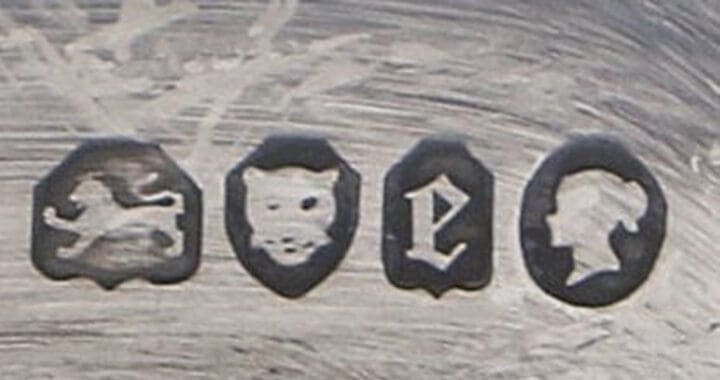Silver is a commodity which is in an interesting place. Last year the price rose hugely, in line with gold, and as a result of global economic concerns. Typically, when there is economic uncertainty the price of precious metals rises because they are a safe haven. The silver price has now declined again, also in line with gold, but many people believe that the price of silver is being suppressed (conspiracy theorists have a field day with the control banks and governments may have over this) and that it may rise dramatically in the medium to long term. To this end there are people collecting/hoarding silver against this possibility. Sometimes these people will buy from dealers who have picked up uncommercial items and are happy to sell them on at slightly above scrap price.

A Georgian silver tea service – not much called for in entertaining today
Silver is also interesting because whilst gold is, by and large, used for decorative purposes silver is used a lot in industry, particularly in medical equipment, electronics, the nuclear industry and many other areas so the price is indexed against these uses too. For example, the price of platinum is greatly reduced now because it is no longer in demand for catalytic converters in diesel cars.

A silver claret jug – still a beautiful addition to the sideboard
So, this brings us on to what is and isn’t saleable in the silver market.

A novelty silver mustard pot in the form of an owl – very much a collector’s item today
The most apposite question to ask would be “Is it useful, is it rare or is it beautiful?” If it ticks one or more of these boxes the market is extremely strong. If not, then silver may be worth little over scrap. To give some examples, in the 20th century wedding presents were often silver gifts, cruets sets, tea sets, fish eaters and servers. As we no longer used ground white pepper, or tend to make tea in a silver tea pot or even eat our fish with fish eaters, the prolific examples of these relatively ordinary things are not in great demand. However, there is a huge appetite for unusual items, novelty items, maybe a mustard pot in the shape of an owl or a mouse? Tableware is always popular; candlesticks, claret jugs, wine coasters and some flatware are greatly in demand.

A silver cup made by Omar Ramsden – still much sought after today
Finally, the rare. Dealers and collectors will battle over rare silver, pieces by sought after makers across the ages, for example Paul Storr, Paul de Lamerie, Hester Bateman and the Bateman family, Liberty, Omar Ramsden, to name but a few. These are a handful of the makers across the years whose work is highly sought after. Bateman pieces can be acquired relatively inexpensively, whereas pieces by de Lamerie would command seriously high prices. All would be in demand. As is silver with unusual hallmarks, for example provincial silver and also early silver.














